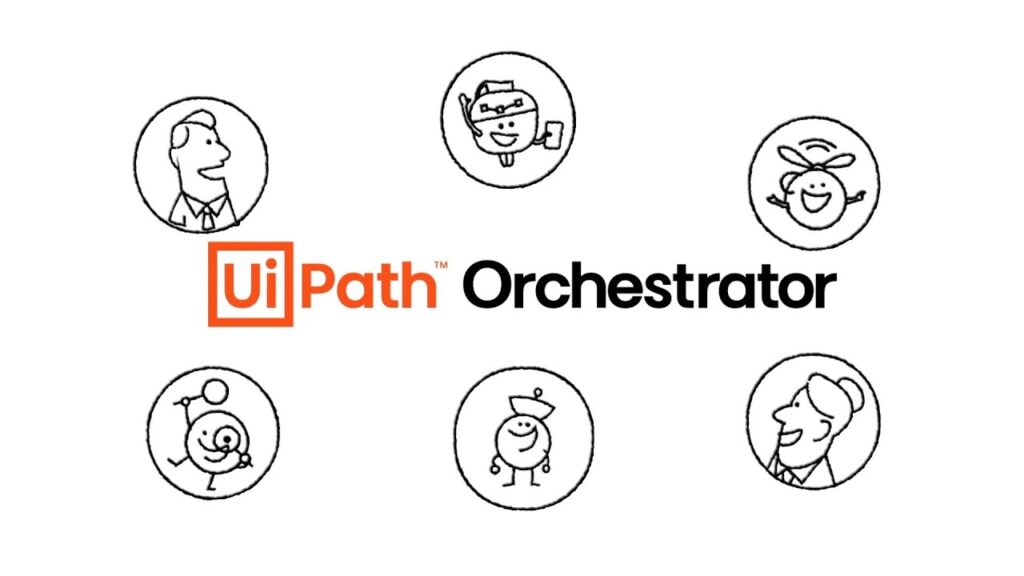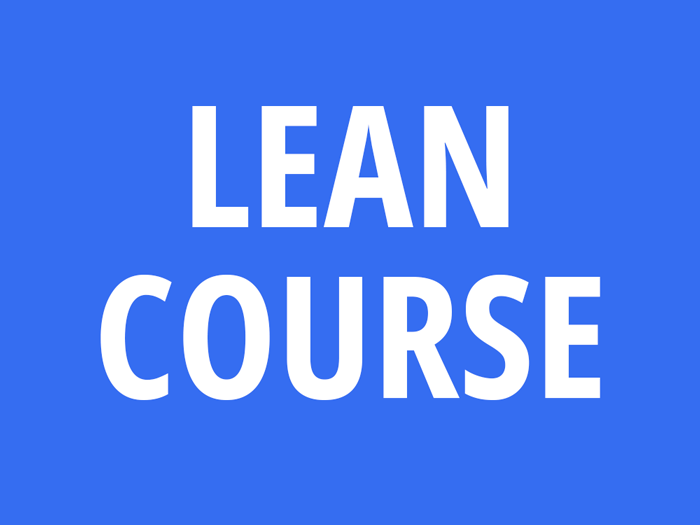Sigma Six Lean
The Crossroads of Efficiency – Your Defining Moment in AI Integration
Unlock your potential with Lean Management and AI
Imagine a future where tasks are accomplished faster, smarter, and with minimal waste through the strategic integration of Lean Management and Artificial Intelligence. As you strive to enhance efficiency within your department, you recognize that significant impact necessitates expertise in Lean Management combined with AI technologies. Embracing diverse perspectives and inclusive practices will enrich your journey toward operational excellence in an AI-driven world.
Two paths, One choice: Lead or Lag
Option 1: Embrace the Lean Management and AI Challenge
Enroll in the Lean Management course, which integrates AI tools for identifying waste, optimising operations, and fostering a culture of continuous improvement. Your leadership—grounded in a commitment to diversity and inclusiveness—will empower your team to eliminate inefficiencies, reduce costs, and deliver higher value to customers. You will gain recognition as a leader who drives impactful change, leveraging diverse viewpoints to create an environment where everyone thrives and innovation flourishes.
Option 2: Stick to the old ways
Choosing not to take this course means facing persistent inefficiencies without structured knowledge of Lean principles and AI integration. Opportunities for improvement will slip by, leaving your department to struggle with outdated practices. The chance to advance your career and make a meaningful impact will remain just out of reach.
Seize the opportunity: Become a Lean leader with AI
By selecting the Lean Management path enhanced with AI, you unlock the potential to transform your department’s performance and cultivate an inclusive culture. Equipped with Lean thinking and AI insights, you will elevate operational efficiency while ensuring diverse perspectives shape your strategy. Position yourself as a leader in efficiency and innovation, guiding your organisation toward a streamlined future where every contribution is recognized and celebrated.
The road ahead: Your Lean Management and AI blueprint
You are ready to embark on this transformative journey. The skills you acquire will set you apart as a key driver of operational excellence and inclusivity. Prepared to lead your team and organisation to success, you will create processes that are efficient, equitable, and welcoming. The future is bright, and you are poised to lead the way with a commitment to performance and inclusiveness in the era of AI.
1 - Introduction to Lean Management and AI
Overview of Lean principles and philosophy.
History and evolution of Lean Management and AI.
The Lean thinking mindset in the context of AI.
The Five Lean principles: value, value stream, flow, pull, perfection.
Importance of Lean and AI in today’s business environment.
Embracing diversity and inclusiveness in Lean and AI practices.
2 - Understanding value in the AI Landscape
Defining value from the customer’s perspective.
Identifying value-added vs. non-value-added activities.
Tools for identifying customer needs (Voice of the Customer, Kano Model).
Value proposition and value stream mapping.
Ensuring diverse customer needs are valued.
3 - Value Stream Mapping
Introduction to Value Stream Mapping (VSM) with AI integration.
Current state vs. future state mapping.
Identifying waste in the value stream.
Creating value stream maps: symbols, process steps, and flow.
Analyzing and improving the value stream using AI tools.
Integrating inclusive practices in process mapping.
4 - Identifying and Eliminating Waste (Muda)
The eight wastes (Muda) in Lean: Overproduction, Waiting, Transport, Overprocessing, Inventory, Motion, Defects.
Techniques for identifying waste in processes.
Practical tools for waste reduction (5S, Visual Management, Kaizen).
Case studies of waste elimination with AI insights.
Promoting equitable resource allocation.
5 - Creating Flow and Pull Systems
The concept of flow in Lean.
Designing processes for continuous flow.
Implementing pull systems (Kanban) to manage Work-in-Progress (WIP) using AI.
Takt Time, Cycle Time, and Lead Time in Lean processes.
Balancing workloads and eliminating bottlenecks.
Ensuring fair and inclusive work distribution.
6 - Lean Tools and Techniques in AI
5S: Workplace organisation and standardization.
Kaizen: Continuous Improvement methodology.
Just-In-Time (JIT) Production.
Poka-Yoke: Error-proofing processes.
SMED (Single-Minute Exchange of Die): Reducing Setup Times.
Visual Management and Andon systems.
Integrating diverse input in tool selection and AI implementation.
7 - Lean Leadership and Culture in an AI Era
The role of leadership in Lean and AI implementation.
Creating a culture of Continuous Improvement.
Employee empowerment and engagement in AI initiatives.
Lean leadership styles and behaviors.
Sustaining Lean initiatives long-term.
Fostering an inclusive and supportive work environment.
8 - Problem Solving and Root Cause Analysis
Introduction to Lean problem-solving techniques with AI tools.
Root Cause Analysis (5 Whys, Fishbone Diagram).
A3 Problem-Solving methodology.
Practical application of problem-solving tools in Lean and AI.
Encouraging diverse perspectives in problem-solving.
9 -Lean Metrics and Performance Measurement
Key Performance Indicators (KPIs) in Lean and AI.
Measuring process efficiency and effectiveness.
Lean accounting principles.
Using metrics to drive continuous improvement.
Visual scorecards and dashboards.
Ensuring metrics reflect diverse perspectives and needs.
10 - Implementing Lean in Various Industries
Lean in manufacturing and AI-driven environments.
Lean in service industries.
Lean in healthcare.
Lean in supply chain management.
Case studies of successful Lean implementations.
Adapting Lean principles to diverse industry requirements.
11 - Lean Project and Change Management
Managing Lean projects: planning, execution, and review.
Change Management principles in Lean and AI.
Overcoming resistance to Lean initiatives.
Leading Lean transformation teams.
Sustaining Lean improvements over time.
Practical Application and Case Studies
• Real-world case studies of Lean implementation with AI.
• Group exercises and simulations.
• Lean project work: Applying Lean tools and AI to actual processes.
• Presenting Lean improvement plans.
• Feedback and lessons learned.
• Highlighting diverse experiences and contributions.
Take the First Step Toward Transforming Your Team!
Our in-house training services are designed with your unique goals in mind. Here’s how we work together to create lasting impact:
Step One: Training Needs Assessment
We collaborate to understand your team’s challenges and goals, tailoring every aspect of the training to your needs.
Step Two: Custom Design and Development
We craft a curriculum based on your specific requirements, ensuring it’s both practical and relevant.
Step Three: Expert Delivery
Our experienced trainers engage your team, fostering real-world skills.
Step Four: Monitoring Effectiveness
Together, we evaluate the program’s impact to ensure lasting results.
What About Costs?
Before we assess your needs and design your course, we can’t provide an accurate fee. For example, a one-day workshop on communication skills may differ significantly in cost from a multi-week leadership development program with advanced role-playing exercises and follow-ups. Each program’s cost depends on its complexity, duration, and materials required.
What’s Next?
The first step is a Training Needs Assessment. This allows us to define the program and provide a detailed proposal tailored to your goals and budget.
📅 Click Below to Schedule Your Session Use our calendar to book your session and start building a training program that delivers real value for your team.
🚀 Schedule Your Assessment Now!

Questions must be Answered in the first stage of Need Assessment :
Enroll Now!
Don’t miss the opportunity to elevate your career and transform your organisation through our Lean Management course focused on AI integration. Enrol now and start your journey toward operational excellence!
Enrol Now and Start Your Journey to Becoming a Lean Expert with AI!
• Group Discounts: Special rates are available for teams and organizations.
• Contact Us: Reach out via email at info@consuledge.com or call us at (02) 8530 2669 for more details.
Any Questions?
So we can get to know you and your needs better
Here's What We Can Help With :
Run into a problem using Consuledge ? Check out our Policy for set-up guides and feature release notes.
- Contact our sales team to talk about your LMS requirements
- Get customer support
- Contact our partnerships team
- Answer any other questions you may have
- Contact our sales team to talk about your LMS requirements
- Get customer support
- Contact our partnerships team
- Answer any other questions you may have
FAQ
How Our Course Engages Finance Departments During Lean Transformations?
In today’s competitive business landscape, effective communication between lean leaders and finance departments is crucial for successful lean transformations. Our course features a comprehensive module on Lean Metrics and Performance Measurement, specifically designed to equip participants with the skills to quantify the financial impact of lean initiatives. This training not only teaches you how to present these results to senior management but also emphasises the importance of involving the finance department early in the lean process. By aligning lean efforts with organisational financial goals, our course helps ensure that your initiatives gain the necessary visibility and support from senior leadership.
Overcoming Local Optima and Understanding Systemic Issues
A common challenge in lean transformations is the tendency to focus on local improvements, which can lead to inefficiencies and missed opportunities. Our course addresses this issue by incorporating advanced concepts from System Theories and the Theory of Constraints (TOC). You will learn how to identify and tackle inefficiencies that stem from concentrating solely on localized enhancements. By viewing processes holistically, our course empowers lean leaders to implement initiatives that contribute to overall system efficiency rather than just optimising isolated components. This approach ensures that every lean initiative drives significant value across the entire organisation.
Ensuring Lean Practices Benefit the Entire System
To maximise the effectiveness of lean transformations, it is essential that lean practices are aligned with the entire organisational system. Our course emphasises this alignment through targeted modules on Value Stream Mapping and Creating Flow and Pull Systems. These critical topics focus on integrating improvements across various parts of the organisation, ensuring that changes yield benefits for the entire system. By applying these principles, participants learn to avoid the common pitfalls of optimising individual components in isolation and instead drive cohesive, system-wide enhancements that lead to sustainable improvements and greater overall efficiency.
Courses you might be interested in

The Symbiosis of Human and AI: How the Internet of Bodies Is Becoming Our New Nervous System

UiPath Orchestrator Isn’t Failing You — IIS, SQL Server, Elasticsearch, or Kibana Might Be

Top 5 Key Components of Robotic Process Automation (RPA): Orchestrating Success in Finance





